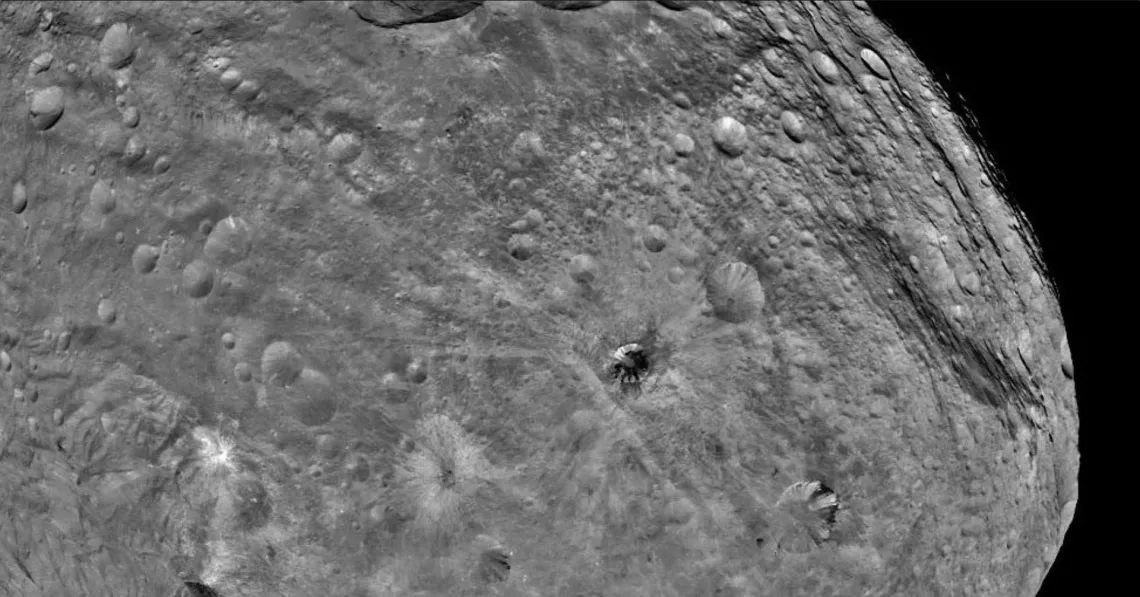Where Did Vesta Come From?

Dawn image of the surface of Vesta.
NASA
NASA-supported researchers have created a simulation to better understand how objects in our solar system’s main asteroid belt were formed.
There are two main types of objects found in the asteroid belt today, referred to as S- and C-complex objects. The S-complex objects likely formed closer to the Sun, inside the orbit of Jupiter. C-complex objects are thought to have originated from the outer solar system.
Vesta is the second most massive body in the asteroid belt, second only to the dwarf planet Ceres. In fact, Vesta accounts for almost 9% of the total mass of all the objects in the asteroid belt. The composition of Vesta is akin to the S-complex objects but it is the only such object with a diameter of over 500 kilometers. Much of what we know about Vesta comes from data gathered by NASA’s Dawn spacecraft, which visited the giant asteroid from July 16, 2011, until September 5, 2012.
In the recent study, the research team posed the question, “How massive was the asteroid belt when the solar system formed?” Using Vesta as a constraint, they created a simulation of how objects in the main asteroid belt accreted from dust and debris at a time when the protoplanetary disk around the Sun was still full of gas. Then they looked at how the population of large objects like Vesta could have been depleted after the disk of gas dispersed.
The simulations showed that the depletion of objects varied over different regions of the main asteroid belt, and the total asteroid belt mass at the time the solar system formed had to be relatively low.
“By small, we mean only about five times less than the mass of the Moon,” commented lead author Rogerio Deienno of the Southwest Research Institute in Boulder, Colorado. “If the primordial asteroid belt mass was larger than that, we should see more Vesta-sized objects than we currently observe… at least one or two. And, of course, the more mass we have in the beginning the more Vestas would form.”
If the asteroid belt had too much mass, it would have led to the formation of tens of thousands of S-complex objects even larger than Vesta. That would mean that we should see lots of Vesta-sized objects in the main asteroid belt today which, of course, we do not.
Because of this, the research team believes that Vesta and other objects with diameters larger than 200 or 300 kilometers probably didn’t form in the main asteroid belt itself. They likely formed in another region of our system and then came to rest in their current location amongst the rocky objects in the belt between Mars and Jupiter.
The study, “Accretion and Uneven Depletion of the Main Asteroid Belt,” was published in The Planetary Science Journal.
